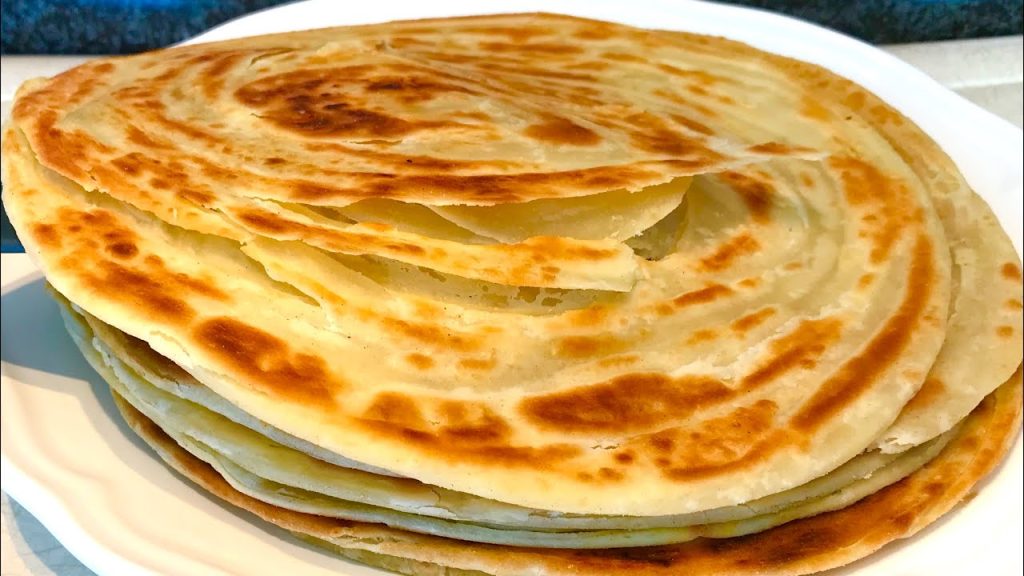Who doesn’t love the soft, flaky goodness of layered chapatis?
Whether paired with a hearty stew, spicy curry, or even a simple cup of chai, chapatis are a staple comfort food in many households.
But let’s be honest—getting those perfect layers and a melt-in-your-mouth texture can feel like an elusive art. The good news? It’s easier than you think, and you don’t need fancy ingredients to master it.
This recipe is designed to help you create chapatis that are soft, fluffy, and beautifully layered, just like the ones your favorite street vendor makes.
With a few simple steps and a little love, you’ll be flipping irresistible chapatis in no time. Let’s get rolling.
Ingredients
Flour: 4 cups of all-purpose wheat flour
Sugar: 1/4 cup (optional, for a slightly sweet flavor)
Salt: 1/2 teaspoon
Oil: 1/2 cup vegetable oil (or ghee)
Additional flour for dusting dough
Water: Warm water (enough to knead the dough, approximately 1.5 cups)
Instructions
Step 1: Prepare the Dough
In a large mixing bowl, combine the flour, sugar, and salt.
Add the vegetable oil and mix until the mixture resembles breadcrumbs.
Gradually add warm water while mixing with one hand until the dough starts to come together. You may not need all the water.
Knead the dough on a lightly floured surface for about 10-15 minutes until it is smooth and elastic. If the dough is sticky, sprinkle a little more flour or apply some oil to your hands to ease the kneading process.
Once kneaded, cover the dough with a cloth or plastic wrap and let it rest for at least 30 minutes to one hour.
Step 2: Shape the Chapatis
After resting, divide the dough into equal portions (about 10-12 balls).
On a floured surface, roll each ball into a thin circle.
Brush each rolled-out chapati with a little oil or ghee.
Sprinkle a little flour over the greased surface, then fold the dough into a strip or roll it into a coil.
Flatten the coil slightly and set it aside. Repeat with the remaining dough balls.
Take one prepared dough coil and roll it out gently into a circle, about 6-8 inches in diameter.
Don’t press too hard to maintain the layers.
Step 3: Cooking
Heat a heavy-bottomed pan over medium heat.
Place one chapati on the hot pan and cook for about 30 to 40 seconds until bubbles form on the surface.
Flip it over and brush with oil or ghee on both sides, pressing down gently with a spatula to ensure even cooking.
Cook until both sides are golden brown and puffed up.
Remove from heat and keep covered in a clean cloth to maintain softness.
Tips for Best Results
- Use warm water for kneading (it helps activate gluten for softer chapatis).
- Knead the dough thoroughly to develop gluten for better elasticity
- Let the dough rest sufficiently for softer chapatis.
- Avoid using butter as it can lead to hard chapatis; stick with vegetable oil or ghee.
- Do not overcook; this can make the chapatis hard
- Cover cooked chapatis immediately to keep them warm and soft.
How do you keep chapatis from getting hard?
To keep chapatis from getting hard, you can employ several tips during preparation and storage. Here’s how to ensure your chapatis remain soft:
Use Warm Water: When kneading the dough, always use warm water instead of cold. This helps to create a softer dough that can yield fluffier chapatis.
Knead Properly: Knead the dough for at least 5-10 minutes until it is smooth and elastic. A well-kneaded dough is crucial for soft chapati.
Rest the Dough: Allow the dough to rest for a minimum of 30 minutes, preferably up to 2 hours. This resting period helps the gluten relax, making the chapatis softer.
Add Oil or Ghee: Add a small amount of oil or ghee into the dough while kneading can help keep the chapatis soft. You can also brush some oil on each chapati before cooking.
Storage: After cooking, place the chapatis in an airtight container or wrap them in a clean cloth to retain moisture. You can also add a little ghee on top of each chapati before storing them, which helps maintain softness
Can I use milk instead of water in chapati?
Yes, you can use milk instead of water to make chapatis, and doing so can result in softer and richer chapatis. Here are some benefits of adding milk into your chapati recipe:
Softness: Milk contributes to a softer texture in chapatis compared to using water alone. The fat content in milk helps keep the dough moist and tender.
Flavor: It adds a subtle richness and flavor to the chapatis, making them more enjoyable.
Nutritional Value: Using milk increases the nutritional profile of the chapatis, providing additional vitamins and minerals.
How to Use Milk in Chapati Dough
Ingredients:
- Use about 1 cup of warm or hot milk for every 2 cups of flour.
- You can also add a bit of oil or ghee to enhance softness further.
Preparation:
- Mix flour, salt, and any optional ingredients (like sugar) in a bowl.
- Gradually add warm milk to the dry ingredients while mixing until a soft dough forms.
- Knead the dough well for about 5-10 minutes until smooth and elastic.
- Let the dough rest for at least 30 minutes before rolling out.
Cooking:
Roll out the dough into thin circles and cook on a hot pan until puffed and golden brown on both sides.


